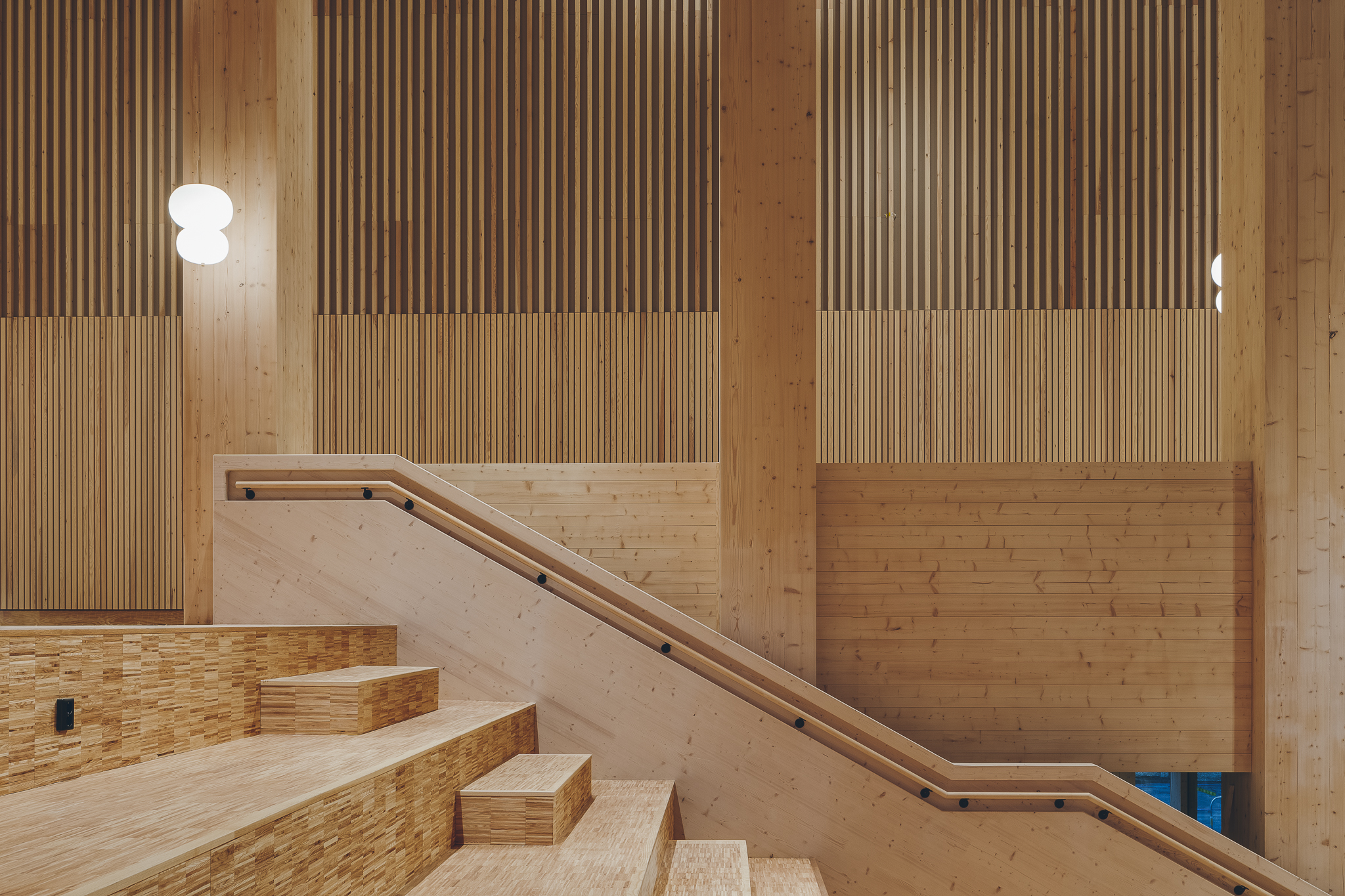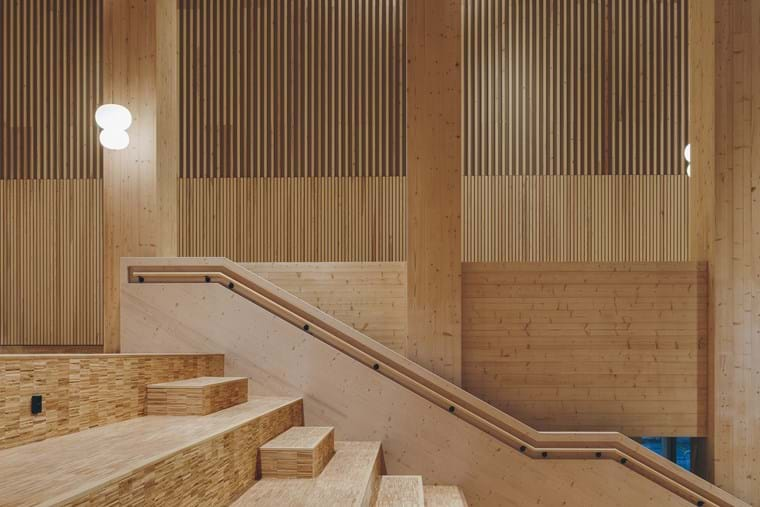Building in wood has a distinguished past and a bright future


Wood seems like the most basic of building materials. Chop down a few trees, shape the trunks, fit them together, and, voila!, you have a Swedish house. Many farmhouses in northern Sweden were built, according to local lore, by “one man with an ax.”
Sweden has a long tradition of building in wood, with its oldest surviving wooden buildings dating from the 13th century, and Japan and the UK have surviving wooden buildings dating from 607 AD and 845 AD, respectively. Wood as a building material has an august and notable past.
However, in the 19th century, a spate of huge city center fires that consumed thousands of wooden buildings in Sweden and the rest of Europe sparked legislation in Sweden in 1874 that limited the use of wood to buildings of no more than two stories.
For a long time, wood’s role as a building material was not only limited by strict government statutes but also disparaged as an obsolete technology. It was regarded as “low tech” and old-fashioned. Concrete, and then steel, took over.
However, the adoption of European Union building rules in 1994 ended the two-story building limit, and growing concern about the effects of construction on climate change led to a resurgence of interest in the “legacy” building material.
Wood building technology has, as a result, rapidly developed, with most wood industry experts believing the fire risk of wood is now similar to other construction materials. The massive timber in Sara kulturhus, for instance, is treated with flame-retardant varnish.
Building in wood also has very obvious benefits to help combat climate change. Wood is a renewable building material that doesn’t consume much energy when worked with. It is also light in relation to its strength and requires less energy to transport - it’s four times lighter than concrete, for example. Even better, trees absorb carbon dioxide from their surroundings, which then continues to be stored, or sequestered, in the wood itself. According to research from Mid Sweden University, just one four-story wooden house stores 150 tonnes of carbon dioxide.
Oskar Norelius, one of Sara kulturhus’s architects, believes the development that really sealed the return of wood as the 21st century’s building material of choice for sustainability-aware architects and builders, was cross-laminated timber (CLT), which was developed in Europe in the 1990s.
“The biggest development in timber construction is ‘mass timber’ or, to be specific, a product called cross-laminated timber (CLT),” says Oskar. “CLT has allowed wood to be used for taller buildings because it is very effective in resisting fire in comparison to standard timber, and because it has a substantial load-bearing capacity when used in wall panels and floor slabs and it shrinks less than conventional timber. It’s really been a game-changer for wood construction.”
CLT is made of stacked layers of wood, glued together to form solid wooden material, with adjacent layers fixed perpendicular to each other. A 3-ply CLT has three layers and a 5-ply CLT has 5 layers. CLT, as a result, is hugely strong, and because it can be used for massive beams, columns, and floors, it’s very fire-resistant.
According to Oskar, one of CLT’s advantages over conventional sawn lumber is that it does not lose strength during a fire. “CLT develops a charred layer on the outside that protects the inner portions of the load-bearing CLT wood material,” Oskar says.
It is also more durable in a broader range of environments because it does not sustain the same degree of shrinkage as conventional sawn timber. And building in wood reduces construction time by up to 60%.
In multistory buildings, CLT is used for both the floor and roof slabs as well as the wall panels. The wall panels support the gravity loads from the floor and roof slabs. They are also strong enough to be used to resist the lateral or horizontal forces from wind and earthquakes, although the very top floors of Sara kulturhus have concrete slabs fitted so as to help reduce sway.
As a result of CLT’s safety, strength and versatility, high-rise wooden buildings are now springing up everywhere.
Norway has Mjöstårnet, with its 18 floors of hotel, apartments, restaurant, and pool.
In Switzerland, Japanese architect Shigeru Ban has designed the Swatch and Omega Campus, a sinuous wooden building that connects the areas between Swatch and Omega’s headquarters.
In Malmö, Fyrtornet is planned for 2023, which will be Sweden's tallest wooden office building, while in Canada there is the 18-story Brock Commons Tallwood House, a student residence in Vancouver, which has been tagged the world's tallest "plyscraper."
The use of wood in construction has mushroomed, to the extent that some Swedish municipalities have set targets for the use of wood in construction.
Evelina Fahlesson, the Vice Chairman of the Skellefteå Municipal Board, who leads the strategy for wooden buildings in Skellefteå, says that while municipalities such as Växjö have set a target that 50% of all new buildings must be built from wood, Skellefteå relies more on its traditions as a center for wood construction. “We have the forests around us, we have the companies that work with wood, and we have the academics in Campus Skellefteå that undertake world-leading research in wood technology - we are naturally inclined to build with wood.”
Sweden, and particularly Skellefteå, is well placed to ramp up building in wood. Sweden has plentiful and well-managed forests. Seventy percent of Sweden’s land is forest, double what it was 100 years ago. But sustainability is also very important. It’s no good building in wood if the forests are rapidly denuded.
Wood accounts for approximately 20 percent of new multistory buildings being constructed in Sweden, but that figure is on the rise.
Jesper Åkerlund, CEO of Martinsons Byggsystem, which provided the glulam and CLT frame for the building of Sara kulturhus, believes that even if the percentage of new wooden buildings hits the expected figure of 30 percent over the next few years, it shouldn’t negatively affect Sweden’s forests.
“We can't just cut all the trees down,” Jesper says. “I don't think that anyone is interested in that. We need to take care of the forest. How do we do that? Well, firstly we can reduce the amount of timber we export and instead use it for building in Sweden. That will really help.”
And Sweden is determined to protect its forests.
As Johan Renström of Skogsstyrelsen, the Swedish Forest Agency, says, “We have in place a regulatory structure to ensure that forests are managed in a sustainable way. Society and lawmakers also expect that the forest owners take the responsibility to exceed what is expected of them in the forest act – and we encourage them to fulfill that responsibility. The certifications that all the larger forest companies, and a lot of the small private forest owners, sign up to also help to ensure that the forests are managed in a sustainable way.”
The future of wood buildings, and the forests that provide the construction materials, appears to be assured. Wood is back. For good.


